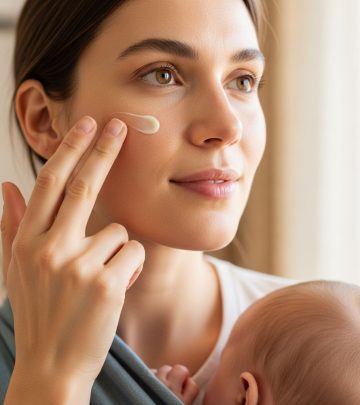Hand, Foot, and Mouth Disease During Pregnancy: Risks, Care, and Guidance
Learn about hand, foot, and mouth disease (HFMD) during pregnancy, its potential impact on mother and baby, and how to stay healthy and safe.

Hand, Foot, and Mouth Disease During Pregnancy: Essential Insights for Expectant Parents
Parenthood is filled with questions and concerns—especially about your health and the well-being of your growing baby. One infection that raises particular worry during pregnancy is Hand, Foot, and Mouth Disease (HFMD). This comprehensive guide addresses what HFMD is, how it might affect you and your baby, the risks involved, and prudent prevention and treatment strategies.
What Is Hand, Foot, and Mouth Disease?
Hand, Foot, and Mouth Disease is a contagious illness mainly seen in children, but adults (including pregnant women) can also be affected. It is caused by viruses from the enterovirus family, most commonly coxsackievirus A16 and enterovirus 71. Symptoms usually include fever, mouth sores, and a skin rash on the hands and feet.
- Typical symptoms: Fever, sore throat, painful mouth sores, skin rash (often with blisters) on hands, feet, and sometimes buttocks.
- Common in: Children under age 5, but pregnant women can contract it, especially with young children at home or in childcare settings.
- Seasonality: Most frequent in spring, summer, and early autumn.
How Does HFMD Spread?
The viruses causing HFMD are spread primarily through the fecal-oral route but can also be transmitted by respiratory droplets, saliva, and touching contaminated surfaces.
- Direct contact with nasal or throat secretions, saliva, blister fluid, stool, or respiratory droplets
- Contaminated objects, such as toys or changing tables
- Children attending daycare or schools are frequent sources of outbreaks
Symptoms of HFMD in Pregnancy
The symptoms in pregnant women are generally similar to those in children, though adults may experience milder or sometimes more severe manifestations. A typical course lasts about 7 to 10 days.
- Sore throat and fever—typically the first signs
- Painful, blister-like mouth sores
- Rash with raised red spots, sometimes with blistering, on hands, feet, and possibly other areas (legs, buttocks, arms)
- Fatigue, malaise, and occasional loss of appetite
Some adults may have a mild illness with few or no symptoms, but others can experience high fever and significant discomfort.
Risks of HFMD During Pregnancy
The risk of severe complications from HFMD during pregnancy is considered low. Research indicates that most women who contract HFMD during pregnancy have healthy pregnancies and deliver healthy babies. However, certain potential risks merit attention:
| Risk | Details |
|---|---|
| Miscarriage or Stillbirth | There is a slight increase in the risk, as with any infection, especially if caught in the third trimester. However, there is no definitive evidence that HFMD directly causes miscarriage or stillbirth. |
| Congenital Defects | Some studies suggest possible links, such as cardiac anomalies, but results are conflicting and do not firmly establish HFMD as a cause. |
| Transmission to Baby (Vertical Transmission) | The virus can rarely cross the placenta. Infection close to delivery can result in a newborn developing HFMD or, in rare cases, more severe complications, such as encephalitis or myocarditis. |
| Other Complications | Dehydration (due to mouth sores) can increase the risk of preterm contractions or premature labor. |
Despite these possibilities, most cases do not result in harm to the fetus or newborn.
Complications In Newborns (Rare)
- Myocarditis (heart inflammation)
- Meningoencephalitis (brain inflammation)
- Neonatal sepsis and death (very rare)
These complications are exceedingly rare and often reported only in cases where mothers were infected very close to delivery.
Diagnosis: How Is HFMD Detected During Pregnancy?
Most HFMD diagnoses are made clinically based on symptoms. Laboratory tests are reserved for complicated or uncertain cases:
- Clinical symptoms: mouth sores, rash, fever
- Throat swab or stool tests: to detect enterovirus in specific circumstances
- Advanced cases: RT-PCR may be used to diagnose infection in severe or atypical presentations, especially when neonatal risk is high.
Treatment and Care for Pregnant Women With HFMD
No specific treatment exists for HFMD. Management focuses on relieving symptoms and mitigating complications:
- Rest and adequate hydration to prevent dehydration, especially if mouth sores make eating/drinking painful
- Safe fever reducers, such as acetaminophen (consult your healthcare provider first)
- Cool liquids and soft foods to soothe sore mouths
- Frequent handwashing and hygiene to prevent spreading the virus
Antiviral medications are not typically used, and most cases resolve within a week. However, always consult your healthcare professional if you are pregnant and develop HFMD symptoms for tailored advice and monitoring.
When to Seek Medical Care During Pregnancy
Pregnant women should promptly contact their healthcare provider if any of the following arise:
- High fever that does not improve
- Signs of dehydration (dry mouth, little urine, dizziness)
- Persistent vomiting or inability to keep liquids down
- Severe sore throat or extensive rash
- Symptoms near time of labor
- Concerns about fetal movements
Alerting your provider ensures appropriate monitoring for potential pregnancy complications and fetal well-being.
Preventing HFMD in Pregnancy
Since many cases result from contact with young children, especially in households with older siblings, prevention strategies focus on minimizing exposure and enhancing hygiene:
- Frequent handwashing: Wash hands thoroughly with soap after contact with children, changing diapers, or handling toys.
- Avoid sharing personal items: Do not share cups, utensils, towels, toothbrushes, or other items that may share saliva or mucus.
- Wear face masks: Consider wearing a mask if your child is coughing or has a runny nose to help prevent respiratory transmission.
- Clean surfaces and toys: Disinfect frequently touched surfaces and toys, especially if a child at home is ill.
- Avoid contact: Try to limit close interaction with children known or suspected to have HFMD.
- Do not pop blisters: Avoid touching or popping blisters, as fluid can be infectious.
Remember, while avoidance may not always be possible, enhanced hygiene meaningfully reduces risk.
Prognosis: What’s the Outlook for HFMD in Pregnancy?
The overwhelming majority of pregnant women who contract HFMD recover fully and go on to have healthy pregnancies and babies. Most research to date shows no clear evidence linking maternal HFMD to widespread severe outcomes like miscarriage, stillbirth, or birth defects.
- Complications are very rare
- Monitor for symptoms especially close to delivery
- Prompt healthcare provider notification ensures best outcomes
Frequently Asked Questions (FAQs)
Q: Can HFMD cause miscarriage or stillbirth?
A: While any infection during pregnancy may slightly increase risks, there is no definitive evidence that HFMD directly causes miscarriage or stillbirth. The risk is considered extremely low, especially when the illness occurs earlier in pregnancy.
Q: Is my baby at risk for birth defects if I get HFMD?
A: Most research has not shown clear links between HFMD and birth defects. Some studies have suggested possible associations, but data are inconclusive and risks remain very low.
Q: Can I breastfeed if I develop HFMD?
A: Yes. HFMD is not transmitted through breast milk. If you have blisters on the breasts or hands, maintain good hygiene and consult your healthcare provider for guidance.
Q: What if I get HFMD close to my due date?
A: Notify your healthcare provider promptly. If a mother is infectious at the time of delivery, there is a small risk her newborn may contract the virus, occasionally resulting in more severe illness. Monitoring and supportive care for baby after birth may be recommended.
Q: Are there special treatments for HFMD during pregnancy?
A: No specific antiviral is approved for HFMD. Treatment focuses on rest, hydration, and managing symptoms. Your obstetrician can provide advice tailored to your case.
Q: How can I pro-actively protect myself during an outbreak?
A: Enhanced hygiene, avoiding shared personal items, cleaning surfaces, and limiting contact with symptomatic children are the best strategies.
Summary Table: Key Facts About HFMD In Pregnancy
| Aspect | Details |
|---|---|
| Common Symptoms | Fever, sore throat, mouth sores, hand/foot rash |
| Risks to Baby | Very low; most babies are healthy. Rare risk of stillbirth or neonatal complications if infection is close to delivery. |
| Prevention | Handwashing, avoiding shared items, cleaning surfaces, minimizing contact with sick children |
| Treatment | Rest, fluids, fever management; consult OB provider |
| Prognosis | Excellent; overwhelmingly positive outcomes |
Conclusion: What Should Expectant Parents Remember?
While hand, foot, and mouth disease can cause concern during pregnancy, the overall prognosis is reassuring. Complications are extremely rare, and most women experience mild illness and healthy pregnancies. Key protective steps include practicing good hygiene, prompt communication with your healthcare provider if symptoms appear, and staying hydrated. With proper care, both you and your baby can remain safe and healthy.












